Discover The Field Guides
The Field Guides

98 Episodes
Reverse
In this episode, Bill and Steve dive into a tiny, bustling world - a world that’s hiding on the feathers of the birds we see every day. Joining them is Dr. Alix Matthews, postdoctoral research associate in the Department of Biological Sciences at the University at Buffalo, and she reveals the strange lives of feather mites — how these barely-visible hitchhikers feed and get around and whether or not they’re helping or hurting their avian hosts.This episode was recorded on September 4, 2025 at Walton Woods in Amherst, NY.Episode Notes and LinksCheck out Dr. Matthews’s website and research here.And watch a presentation on mites she did for Audubon Arkansas in October 2025.Sponsors and Ways to Support UsGumleaf Boots, USA (free shipping for patrons)Thank you to Always Wandering Art (Website and Etsy Shop) for providing the artwork for many of our episodes.Support us on Patreon.Check out the Field Guides merch at our Teespring store. It’s really a great deal: you get to pay us to turn your body into a billboard for the podcast!Photo CreditDr. Alix Matthews - https://matthewsalix.weebly.com/feather-mites.html
It’s part 2 of our dive into the Insect Apocalypse, with our good friend Dr. Jason Dombroskie from the Cornell University Insect Collection!In this part, Jason fills us in on the drivers of the Insect Apocalypse and - most importantly - what we can do about it.This episode was recorded on August 21, 2025 at Rattlesnake Hill Wildlife Management Area in Dalton, NY.. Episode NotesDuring the episode, we made the claim that 40 million acres of the US is lawn, and that that area is equal to all of the country’s National Parks put together. True? Well, sort of. The claim that the U.S. has about 40 million acres of lawn—roughly equal to all our national parks combined—is only partly true. A NASA-funded study led by Cristina Milesi estimated that turfgrass covers about 128,000 km² (≈31 million acres) of the continental U.S., making it the largest irrigated “crop” in the country (Milesi et al., Environmental Management, 2005; NASA Earth Observatory). Later analyses and popular summaries often round that up to ≈40 million acres (e.g., Scienceline, 2011; LawnStarter, 2023). By comparison, the total land area of all officially designated U.S. National Parks is about 52.4 million acres, while the entire National Park System—which also includes monuments, preserves, and historic sites—covers about 85 million acres (National Park Service, 2024). So while lawns and parks occupy areas of similar magnitude, lawns do not actually equal or exceed the combined area of the national parks. Is it better to mulch leaves on your lawn or leave them be? Here’s what we found: It’s generally best to mulch your leaves with a mower rather than rake or remove them. Research from Michigan State University found that mowing leaves into small pieces allows them to decompose quickly, returning nutrients to the soil and reducing weeds like dandelions and crabgrass (MSU Extension, “Don’t rake leaves — mulch them into your lawn”, 2012). Cornell University studies similarly show that mulched leaves improve soil structure, moisture retention, and microbial activity (Cornell Cooperative Extension, “Leaf Mulching: A Sustainable Alternative”, 2019). However, in garden beds, wooded edges, or under shrubs, it’s often better to leave leaves whole, since they provide winter habitat for butterflies, bees, and other invertebrates that overwinter in leaf litter (National Wildlife Federation, “Leave the Leaves for Wildlife”, 2020). The ideal approach is a mix: mow-mulch leaves on grassy areas for turf health and leave them intact where they naturally fall to support biodiversity and soil ecology. Episode LinksThe Cornell University Insect Collection Also, check out their great Instagram feedAnd their annual October event InsectapaloozaFind out more about the recently discovered species of Swallowtail, Papilio solstitius, commonly known as the Midsummer Tiger Swallowtail- https://www.sci.news/biology/papilio-solstitius-13710.htmlSponsors and Ways to Support UsThank you to Always Wandering Art (Website and Etsy Shop) for providing the artwork for many of our episodes.Support us on Patreon.Works CitedBiesmeijer, J.C., Roberts, S.P., Reemer, M., Ohlemuller, R., Edwards, M., Peeters, T., Schaffers, A.P., Potts, S.G., Kleukers, R.J.M.C., Thomas, C.D. and Settele, J., 2006. Parallel declines in pollinators and insect-pollinated plants in Britain and the Netherlands. Science, 313(5785), pp.351-354. Boyle, M.J., Bonebrake, T.C., Dias da Silva, K., Dongmo, M.A., Machado França, F., Gregory, N., Kitching, R.L., Ledger, M.J., Lewis, O.T., Sharp, A.C. and Stork, N.E., 2025. Causes and consequences of insect decline in tropical forests. Nature Reviews Biodiversity, pp.1-17. Burghardt, K.T., Tallamy, D.W., Philips, C. and Shropshire, K.J., 2010. Non‐native plants reduce abundance, richness, and host specialization in lepidopteran communities. Ecosphere, 1(5), pp.1-22. Colla, S.R. and Packer, L., 2008. Evidence for decline in eastern North American bumblebees (Hymenoptera: Apidae), with special focus on Bombus affinis Cresson. Biodiversity and Conservation, 17(6), pp.1379-1391. Crossley, M.S., Meier, A.R., Baldwin, E.M., Berry, L.L., Crenshaw, L.C., Hartman, G.L., Lagos-Kutz, D., Nichols, D.H., Patel, K., Varriano, S. and Snyder, W.E., 2020. No net insect abundance and diversity declines across US Long Term Ecological Research sites. Nature Ecology & Evolution, 4(10), pp.1368-1376. DeWalt, R.E., Favret, C. and Webb, D.W., 2005. Just how imperiled are aquatic insects? A case study of stoneflies (Plecoptera) in Illinois. Annals of the Entomological Society of America, 98(6), pp.941-950. Edwards, C.B., Zipkin, E.F., Henry, E.H., Haddad, N.M., Forister, M.L., Burls, K.J., Campbell, S.P., Crone, E.E., Diffendorfer, J., Douglas, M.R. and Drum, R.G., 2025. Rapid butterfly declines across the United States during the 21st century. Science, 387(6738), pp.1090-1094. Gaona, F.P., Iñiguez-Armijos, C., Brehm, G., Fiedler, K. and Espinosa, C.I., 2021. Drastic loss of insects (Lepidoptera: Geometridae) in urban landscapes in a tropical biodiversity hotspot. Journal of Insect Conservation, 25(3), pp.395-405. Gardiner, M.M., Allee, L.L., Brown, P.M., Losey, J.E., Roy, H.E. and Smyth, R.R., 2012. Lessons from lady beetles: accuracy of monitoring data from US and UK citizen‐science programs. Frontiers in Ecology and the Environment, 10(9), pp.471-476. Groenendijk, D. and van der Meulen, J., 2004. Conservation of moths in The Netherlands: population trends, distribution patterns and monitoring techniques of day-flying moths. Journal of Insect Conservation, 8(2), pp.109-118. Haddad, N.M., Haarstad, J. and Tilman, D., 2000. The effects of long-term nitrogen loading on grassland insect communities. Oecologia, 124(1), pp.73-84. Hallmann, C.A., Sorg, M., Jongejans, E., Siepel, H., Hofland, N., Schwan, H., Stenmans, W., Müller, A., Sumser, H., Hörren, T. and Goulson, D., 2017. More than 75 percent decline over 27 years in total flying insect biomass in protected areas. PLoS ONE12 (10): e0185809 Hallmann, C.A., Ssymank, A., Sorg, M., de Kroon, H. and Jongejans, E., 2021. Insect biomass decline scaled to species diversity: General patterns derived from a hoverfly community. Proceedings of the National Academy of Sciences, 118(2), p.e2002554117. Harris, J.E., Rodenhouse, N.L. and Holmes, R.T., 2019. Decline in beetle abundance and diversity in an intact temperate forest linked to climate warming. Biological Conservation, 240, p.108219. Hembry, D.H., 2013. Herbarium Specimens Reveal Putative Insect Extinction on the Deforested Island of Mangareva (Gambier Archipelago, French Polynesia). Pacific Science, 67(4), pp.553-560. Høye, T.T., Loboda, S., Koltz, A.M., Gillespie, M.A., Bowden, J.J. and Schmidt, N.M., 2021. Nonlinear trends in abundance and diversity and complex responses to climate change in Arctic arthropods. Proceedings of the National Academy of Sciences, 118(2), p.e2002557117. Huryn, A.D. and Wallace, J.B., 2000. Life history and production of stream insects. Annual review of entomology, 45(1), pp.83-110. Kawahara, A.Y., Reeves, L.E., Barber, J.R. and Black, S.H., 2021. Eight simple actions that individuals can take to save insects from global declines. Proceedings of the National Academy of Sciences, 118(2), p.e2002547117. Leuenberger, W., Doser, J.W., Belitz, M.W., Ries, L., Haddad, N.M., Thogmartin, W.E. and Zipkin, E.F., 2025. Three decades of declines restructure butterfly communities in the Midwestern United States. Proceedings of the National Academy of Sciences, 122(33), p.e2501340122. Liang, M., Yang, Q., Chase, J.M., Isbell, F., Loreau, M., Schmid, B., Seabloom, E.W., Tilman, D. and Wang, S., 2025. Unifying spatial scaling laws of biodiversity and ecosystem stability. Science, 387(6740), p.eadl2373. Lister, B.C. and Garcia, A., 2018. Climate-driven declines in arthropod abundance restructure a rainforest food web. Proceedings of the National Academy of Sciences, 115(44), pp.E10397-E10406. Owens, A.C., Pocock, M.J. and Seymoure, B.M., 2024. Current evidence in support of insect-friendly lighting practices. Current Opinion in Insect Science, 66, p.101276. Myers, L.W., Kondratieff, B.C., Grubbs, S.A., Pett, L.A., DeWalt, R.E., Mihuc, T.B. and Hart, L.V., 2025. Distributional and species richness patterns of the stoneflies (Insecta, Plecoptera) in New York State. Biodiversity Data Journal, 13, p.e158952. Pilotto, F., Kühn, I., Adrian, R., Alber, R., Alignier, A., Andrews, C., Bäck, J., Barbaro, L., Beaumont, D., Beenaerts, N. and Benham, S., 2020. Meta-analysis of multidecadal biodiversity trends in Europe. Nature communications, 11(1), p.3486. Pinkert, S., Farwig, N., Kawahara, A.Y. and Jetz, W., 2025. Global hotspots of butterfly diversity are threatened in a warming world. Nature Ecology & Evolution, pp.1-12. Raven, P.H. and Wagner, D.L., 2021. Agricultural intensification and climate change are rapidly decreasing insect biodiversity. Proceedings of the National Academy of Sciences, 118(2), p.e2002548117. Rodrigues, A.V., Rissanen, T., Jones, M.M., Huikkonen, I.M., Huitu, O., Korpimäki, E., Kuussaari, M., Lehikoinen, A., Lindén, A., Pietiäinen, H. and Pöyry, J., 2025. Cross‐Taxa Analysis of Long‐Term Data Reveals a Positive Biodiversity‐Stability Relationship With Taxon‐Specific Mechanistic Underpinning. Ecology Letters, 28(4), p.e70003. Salcido, D.M., Forister, M.L., Garcia Lopez, H. and Dyer, L.A., 2020. Loss of dominant caterpillar genera in a protected tropical forest. Scientific reports, 10(1), p.422. Sánchez-Bayo, F. and Wyckhuys, K.A., 2019. Worldwide decline of the entomofauna: A review of its drivers. Biological conservation, 232, pp.8-27. Schowalter, T.D., Pandey, M., Presley, S.J., Willig, M.R. and Zimmerman, J.K., 2021. Arthropods are not declining but are responsive to disturbance in the Luquillo Experimental Forest, Puerto Rico. Proceedings of the National Academy of Sciences, 118(2), p.e2002556117. Sedlmeier, J.E., Grass, I., Bendalam, P., Höglinger, B., Walker, F., Gerh
The guys are back in the field with our good friend Dr. Jason Dombroskie from the Cornell University Insect Collection!Listen in as Jason leads us through fields and forests, trusty butterfly net in hand, filling us in on the so-called “Insect Apocalypse.” Are insect populations really collapsing worldwide? What do the numbers say? How bad is it, and — most importantly — what can we do about it?In this part, we head out on the trail with Jason. He introduces us to some insects we find along the way and schools us on why insects are so important, and in part two – he delves into the details of the insect apocalypse – what we know and what we don’t know. And since we feel bad that you can’t see what we got to see – we bring back a little trick we had in our last episodes with Jason – each time we find a critter listen for the sound of a camera shutter. That’s the signal to visit this episode’s page on our website – thefieldguidespodcast.com - we’ll have photos there timestamped so you can see what we’re looking at, along with some extra info. Enjoy…This episode was recorded on August 21, 2025 at Rattlesnake Hill Wildlife Management Area in Dalton, NY.. Episode NotesSteve said he heard that there are more species of just weevils than there are of fish. Is that true? At one point in the episode Steve mentioned he’d heard there are more species of weevils than there are of fish. I looked it up, and he’s right! Scientists have described around 60–70,000 weevil species, with the real total likely over 100,000, while all the fish in the world come in at about 35,000 species. So as surprising as it sounds, Steve’s claim checks out—the humble weevil family really does outnumber all the fish.It was also mentioned that some insects are only known from a single specimen in a collection and have never been seen again in the wild. We looked for a study and found a large one from 2018 that looked at more than 800,000 insect species – it found that about one in five—around 19%—are described from a single specimen and never collected again (Lim et al., Current Biology, 2018). It really shows how much of insect diversity is still barely known.Pollard Walk - During the episode Bill asked about something called a Pollard Walk. That’s actually a standard insect survey method. The idea is simple: you walk a fixed route—usually the same path each time—at a steady pace and record every insect you see within a certain distance, often about 2.5 meters on each side. It’s kind of like a birding “point count,” but moving. The method, named after Eric Pollard who developed it in the 1970s for butterfly monitoring, is still one of the most widely used ways scientists track insect populations over time.Visit thefieldguidespodcast.com for full episode notes, links, and works cited.
Part 2 of our time in the woods with naturalist Sandy Geffner. This time, Sandy leads Steve and Bill on a “hike”—though with Sandy, the word takes on a different meaning. You might not cover much distance, but you’ll travel miles in understanding: exploring ecology and hearing stories of the forest and the wildlife within it. Enjoy!This episode was recorded on July 21, 2025 at JP Nicely Memorial Park in West Falls, NY.Episode Notes and LinksSandy’s favorite books: A Sand County Almanac by Aldo Leopold and Finding the Mother Tree by Suzanne Simard. But we feel that we have to call ourselves out here because we’ve been critical of Simard’s work before and maybe we should’ve brought this up with Sandy during the episode (but we obviously didn’t have the stones). For a deep dive into some of the criticisms of Simard’s word, check out the In Defense of Plants podcast’s series of episodes that starts here. Or this article by three professors who’ve spent their careers studying forest fungi. Sponsors and Ways to Support UsThank you to Always Wandering Art (Website and Etsy Shop) for providing the artwork for many of our episodes.Support us on Patreon.Photo CreditThe Natural Side of UB by Robby Johnson
What exactly is a “naturalist”? Spend a little time with Sandy Geffner, and you’ll find out. Steve and Bill rarely go more than an episode or two without mentioning him—a naturalist who profoundly shaped both their lives. This month, they head into the woods to talk with Sandy about how a baseball-loving kid from Long Island became someone who’s inspired countless people to deepen their connection with the natural world.This episode was recorded on July 21, 2025 at JP Nicely Memorial Park in West Falls, NY.Episode Notes and LinksEarth Spirit Educational Services Rogers Environmental CenterThe State University of NY at Buffalo’s Dept. of Environment and SustainabilitySandy’s UB Faculty PageSantee Sioux ReservationStony Kill Farm Environmental Education CenterTifft Nature PreserveCayuga Nature Center / TreetopsSponsors and Ways to Support UsThank you to Always Wandering Art (Website and Etsy Shop) for providing the artwork for many of our episodes.Support us on Patreon.Photo CreditSUNY at Buffalo
It’s hard to believe, but we’re doing another episode on fish! This time around, Steve introduces us to the Sturgeon (family Acipenseridae), from their dinosaur-era origins to their caviar-fueled scandals (did you know Beluga caviar comes from Sturgeon? Bill didn’t either). So strap in as the guys touch on Sturgeon, for the very first time. This episode was recorded on June 29, 2025 at Eighteenmile Creek County Park in Hamburg, NY.Episode Notes and LinksComing soon!Sponsors and Ways to Support UsGumleaf Boots, USA (free shipping for patrons)Thank you to Always Wandering Art (Website and Etsy Shop) for providing the artwork for many of our episodes.Support us on Patreon.Works CitedComing soon…Photo CreditBeluga Sturgeon (Huso huso) photo by Максим Яковлєв. https://commons.wikimedia.org/wiki/File:%D0%91%D1%96%D0%BB%D1%83%D0%B3%D0%B0_(Huso_huso).jpg
In this special bonus episode we're crossing over with The Spark Bird Podcast! (@sparkbirdproject)Bill joins one of the hosts of the Spark Bird Project podcast, Jenn Lodi-Smith, to go birding in Buffalo’s historic Forest Lawn Cemetery, sharing spark bird stories, conservation efforts for migration, and the joy of birding in community.You’ll also hear reflections from folks at the Feminist Bird Club of Buffalo (@fbc.buf) May the Spark Be with You outing, all recorded on-site at Forest Lawn Cemetery. This episode is a celebration of connection, accessibility, conservation, and the shared love of birds that brings us all together.This episode was recorded on May 4, 2025 at Forest Lawn Cemetery in Buffalo, NY.Episode Notes and LinksThe Spark Bird ProjectThe Spark Bird PodcastThe Femenist Bird Club BuffaloSponsors and Ways to Support UsGumleaf Boots, USA (free shipping for patrons)Thank you to Always Wandering Art (Website and Etsy Shop) for providing the artwork for many of our episodes.Support us on Patreon.Visit thefieldguidespodcast.com for full episode notes, links, and works cited.
Bill and Steve return for the second part of their look into the Dawn Chrous, that early morning explosion of bird song that refuses to let you sleep in.This episode was recorded on April 20, 2025 at Majors Park in East Aurora, NY.Sponsors and Ways to Support UsGumleaf Boots, USA (free shipping for patrons)Thank you to Always Wandering Art (Website and Etsy Shop) for providing the artwork for many of our episodes.Support us on Patreon.Works CitedGil, D. and Llusia, D., 2020. The bird dawn chorus revisited. Coding strategies in vertebrate acoustic communication, pp.45-90.American Redstart vocalizations used in the episode were from the Cornell Lab of Ornithology’s YouTube page.Photo CreditThe doubly deeply disturbing image that graces this episode was generated by AI in Canva.
Bill and Steve look into the Dawn Chrous, that early morning explosion of bird song that refuses to let you sleep in. And, for all you Daniel-haters out there, this episode is 100% Daniel-free (but Bill and Steve are both crying on the inside. We miss Daniel buckets, and we're betting you do, too).This episode was recorded on April 10, 2025 at the California Road Rereation Area in Orchard Park, NY.Episode Notes and LinksAre there orioles in China? Bill shared the classic Chinese poem from the Tang Dynasty (~600–900 CE) - the one called "Feelings on Awakening from Drunkenness on a Spring Day" by Li Bai, and Steve wondered: Are there Orioles in China. Turns out that, yes, there are, and they’re more oriole-y (?) than ours! That’s because our New World orioles, like the one we’re betting you’re thinking of right now (the well-known orange and black Baltimore Oriole) belong to the family Icteridae and are not closely related to Old World orioles. Instead, they’re closely related to blackbirds and meadowlarks, fellow family members in the Icteridae. Old world orioles in Europe and Asia, on the other hand, belong to the family Oriolidae. Our orioles were named after them because of the similarities to the old world orioles in behavior, diet, and appearance, but, despite the similarities – these families are not closely related. The similarities evolved independently due to convergent evolution (when species develop similar traits in response to similar environmental pressures). So, yes, Steve, there are orioles in China, but it’s tough to say for sure which oriole Li Bai heard in his drunken stupor because Birds of China reports seven species found throughout the country, and, as we pointed out, given Li Bai’s state, maybe the bird was only in his head. Is there a Thorpe’s Law? When Bill mentioned William Thorpe, a British biologist and ornithologist, Steve thought he recalled there was an ecological law or concept credited to Thorpe. Bill scoured the Internet, but the closest thing he could find was Taylor's power law, an empirical law in ecology that relates the variance of the number of individuals of a species per unit area of habitat to the corresponding mean by a power law relationship. If that made sense to you, Bill asks if you could kindly explain it to him. bird Can someone look at a sound spectrograph and identify the bird? The guys wondered if a sound researcher looking at sound spectrographs (visual representations of bird song) could get good enough to know what bird they’re looking at just by the visual? An internet search was inconclusive- a lot of sites talk about using the spectrographs as an aid to get better at understanding and ID’ing bird song, but we couldn’t find any that specifically addressed this question. We’ve emailed some bird biologists and we’ll update these notes when we hear back!Social Monogamy vs. Sexual Monogamy: Steve talked about how he’d heard that even in species that bond for life, members of the pair will still seek out other mates. True? First, let’s make a distinction that Steve alluded to in the episode: that is, social vs. sexual monogamy. In birds, "monogamy" often refers to a social bond, where a pair stays together and raises offspring together. However, this doesn't necessarily mean they are sexually faithful to each other. So, socially monogamous doesn’t equal sexual monogamy. Looking in to this, we landed on a passage in The Sibley Guide to Bird Life and Behavior – a birder’s bible if there is one – it reports: “90 percent of all bird species are socially monogamous, but some level of cheating is common. Cheating, or “extra-pair copulation” also occurs, but rarely, among birds of sexually monogamous, mated-for-life species, “but is not yet known how many species engage in extra-pair copulations, since many species remain to be studied. However, it appears that genetic monogamy may be the exception rather than the rule among birds.” Sponsors and Ways to Support UsGumleaf Boots, USA (free shipping for patrons)Thank you to Always Wandering Art (Website and Etsy Shop) for providing the artwork for many of our episodes.Support us on Patreon.Check out the Field Guides merch at our Teespring store. It’s really a great deal: you get to pay us to turn your body into a billboard for the podcast!Works CitedGil, D. and Llusia, D., 2020. The bird dawn chorus revisited. Coding strategies in vertebrate acoustic communication, pp.45-90.Greives, T.J., Kingma, S.A., Kranstauber, B., Mortega, K., Wikelski, M., van Oers, K., Mateman, A.C., Ferguson, G.A., Beltrami, G. and Hau, M., 2015. Costs of sleeping in. Functional Ecology, 29(10), pp.1300-1307.Staicer, C.A., Spector, D.A. and Horn, A.G., 1996. The dawn chorus and other diel patterns in acoustic signaling. Ecology and evolution of acoustic communication in birds, pp.426-453.Dawn Chorus sounds used in the beginning of the episode: “Dawn Chorus in Tompkins County, New York” posted by the Cayuga Bird Club https://www.youtube.com/watch?v=4zZtjYQUgaQ Photo CreditThe deeply disturbing image that graces this episode was generated by AI in Canva.
In this episode, Steve leads a discussion on the invasive Grass Carp. The guys go over the evolutionary history of grass carp and its relatives, its biology, its introduction to The Great Lakes region, why people are concerned, and anything interesting Steve found out about it.There are a lot more interesting fish topics that we can explore in the future, at least while Steve is researching fish. Enojy the episode!This episode was recorded on February 24, 2025 at JP Nicely Memorial Park in West Falls, NY.Episode Notes and LinksSeagulls are fish.Common Carp are invasive and cause environmental damage. The guys didn’t get this right. For shame!Sponsors and Ways to Support UsGumleaf Boots, USA (free shipping for patrons)Thank you to Always Wandering Art (Website and Etsy Shop) for providing the artwork for many of our episodes.Support us on Patreon.Check out the Field Guides merch at our Teespring store. It’s really a great deal: you get to pay us to turn your body into a billboard for the podcast!Works CitedChapman, D.C., Davis, J.J., Jenkins, J.A., Kocovsky, P.M., Miner, J.G., Farver, J. and Jackson, P.R., 2013. First evidence of grass carp recruitment in the Great Lakes Basin. Journal of Great Lakes Research, 39(4), pp.547-554.Mitchell, A.J. and Kelly, A.M., 2006. The public sector role in the establishment of grass carp in the United States. Fisheries, 31(3), pp.113-121.Wang, Y., Lu, Y., Zhang, Y., Ning, Z., Li, Y., Zhao, Q., Lu, H., Huang, R., Xia, X., Feng, Q.I. and Liang, X., 2015. The draft genome of the grass carp (Ctenopharyngodon idellus) provides insights into its evolution and vegetarian adaptation. Nature genetics, 47(6), pp.625-631.Wu, C.S., Ma, Z.Y., Zheng, G.D., Zou, S.M., Zhang, X.J. and Zhang, Y.A., 2022. Chromosome-level genome assembly of grass carp (Ctenopharyngodon idella) provides insights into its genome evolution. BMC genomics, 23(1), p.271.Photo CreditPeter Halasz (User:Pengo), Melbourne, CC BY-SA 3.0 Grass carp (Ctenopharyngodon idella) at Tropicarium Budapest. No changes made to photo
The guys return to Everglades National Park, again looking for a predator that Daniel wants to get too close to: the American Crocodile (Crocodylus acutus). Listen in as Daniel shares some research, busts croc-related myths, and Steve probably gets a little too excited about how crocs deal with salt water. Bill doesn’t have much to say, but he’s there, too. Enjoy!This episode was recorded on January 7, 2025 on the Bear Lake Trail in Everglades National Park. The last bit where the guys find the croc was also recorded in the Park, at the Flamingo Marina.Episode Notes and LinksAs promised during the episode, Steve is looking into how crocs process and excrete excess salt. As soon as he gets to the bottom of it, we’ll share it here.In the meantime, here’s what Bill found when he asked DeepSeek: Crocodiles, like many other marine and estuarine reptiles, have specialized salt glands to help them excrete excess salt from their bodies. These glands, known as salt glands or lingual glands (located on their tongues), actively transport salt ions (primarily sodium and chloride) from their bloodstream into the gland ducts. The salt is then excreted as a concentrated saline solution, which is expelled from the body.Crocodiles do not chemically change the salt (sodium chloride) into something else. Instead, they filter and concentrate it, allowing them to maintain proper electrolyte balance in their bodies, especially when living in saltwater environments. This process is crucial for osmoregulation, as it prevents dehydration and helps them survive in both freshwater and saltwater habitats.In summary, crocodiles excrete salt in its original form (sodium chloride) but in a highly concentrated solution, rather than transforming it into a different substance.Sponsors and Ways to Support UsGumleaf Boots, USA (free shipping for patrons)Thank you to Always Wandering Art (Website and Etsy Shop) for providing the artwork for many of our episodes.Support us on Patreon.Check out the Field Guides merch at our Teespring store. It’s really a great deal: you get to pay us to turn your body into a billboard for the podcast!Works CitedAdmin, CrocAttack. “Database.” CrocAttack, CrocAttack, 17 July 2023, crocattack.org/database/. Balaguera-Reina, S. A., M. Venegas-Anaya, V. Beltrán-López, A. Cristancho, and L. D. Densmore III 2018. Food habits and ontogenetic dietary partitioning of American crocodiles in a tropical Pacific Island in Central America. Ecosphere 9(9):e02393. 10.1002/ecs2.2393Briggs-Gonzalez VS, Basille M, Cherkiss MS, Mazzotti FJ. American crocodiles (Crocodylus acutus) as restoration bioindicators in the Florida Everglades. PLoS One. 2021 May 19;16(5):e0250510. doi: https://pubmed.ncbi.nlm.nih.gov/34010342/Grigg, Gordon C., et al. Biology and Evolution of Crocodylians. Comstock Publishing Associates, a Division of Cornell University Press ; CSIRO Publishing, 2015. Mazzotti Frank J. , Balaguera-Reina Sergio A. , Brandt Laura A. , Briggs-González Venetia , Cherkiss Mike , Farris Seth , Godahewa Avishka 2022. Natural and Anthropogenic Factors Influencing Nesting Ecology of the American Crocodile in Florida, United States. Frontiers in Ecology and Evolution Vol. 10. https://www.frontiersin.org/journals/ecology-and-evolution/articles/10.3389/fevo.2022.904576 ISSN=2296-701XMazzotti, F.J. The American Crocodile in Florida Bay. Estuaries 22, 552–561 (1999). https://doi.org/10.2307/1353217Mazzoti, Frank. “American Crocodiles (Crocodylus Acutus) in Florida.” Myfwc.Com, University of Florida IFAS Extension, myfwc.com/media/1847/americancrocodilesinfl.pdf. Accessed Dec. 2024. Villegas, Alejandro, & Schmitter-Soto, Juan Jacobo. (2008). Feeding habits of the American crocodile, Crocodylus acutus (Cuvier, 1807) (Reptilia: Crocodylidae) in the southern coast of Quintana Roo, Mexico. Acta zoológica mexicana, 24(3), 117-124. Recuperado en 30 de enero de 2025, de http://www.scielo.org.mx/scielo.php?script=sci_arttext&pid=S0065-17372008000300008&lng=es&tlng=en.
This month, we head to the tropics and meet the Blue Iguana of the Cayman Islands! This endangered lizard is found nowhere else on the globe save for the island of Grand Cayman in the Caribbean, and just two decades ago, it’s likely there were fewer than 25 animals remaining in the wild. This was a species that was functionally extinct, but thanks to the herculean efforts of a dedicated group of people, the Blue Iguana (Cyclura lewisi) has been brought back from the brink, with over 1000 iguanas now roaming the dry, rocky forests of Grand Cayman. In July of 2024 Bill traveled there to interview Fred Burton, the man many people credit as the main driver behind the effort to save this endemic species.This episode was recorded on July 25, 2024 at the Queen Elizabeth II Botanic Park, North Side, Grand CaymanEpisode Notes and LinksFind ourt more about conservation of the Blue Iguana by visiting the National Trust for the Cayman Islands.If you want to support efforts to help the Blue Iguana, you can donate here.Check out Fred’s book, The Little Blue Book: A Short History of the Grand Cayman Blue IguanaIf you ever find yourself in Grand Cayman, we can’t recommend enough that you visit the Queen Elizabeth II Botanic Park, home to the Blue Iguana captive breeding program.Sponsors and Ways to Support UsGumleaf Boots, USA (free shipping for patrons)Thank you to Always Wandering Art (Website and Etsy Shop) for providing the artwork for this episode.Support us on Patreon.Check out the Field Guides merch at our Teespring store. It’s really a great deal: you get to pay us to turn your body into a billboard for the podcast!Works CitedBurton, F.J., 2004. Battling extinction: A view forward for the Grand Cayman Blue Iguana (Cyclura lewisi). Iguana, 11(4), pp.232-237.Burton, F.J., 2005. Restoring a new wild population of Blue Iguanas (Cyclura lewisi) in the Salina Reserve, Grand Cayman. Iguana, 12(3), pp.166-174.Burton, F.J., 2011. Population restoration for a critically endangered reptile—the Grand Cayman blue iguana (Cyclura lewisi). Reptiles Australasia, 1, pp.35-44.Chan, N., Shen, Z., Mannion, A., Kurnick, S., Popescu, I.S., Burton, F.J., Calle, P.P. and Fox, J.G., 2021. Helicobacter cyclurae sp. nov., isolated from endangered blue iguanas (Cyclura lewisi). Frontiers in Ecology and Evolution, 9, p.676682.
How hard is it to reintroduce species to a tropical island? Turns out, pretty hard! But it’s so worth it. The rewilding of the Galapagos island of Floreana will make it the largest tropical island ever to be rewilded. Researchers have spent over a decade meticulously planning for the reintroduction of the iconic Floreana Giant Tortoise (Chelonoidis niger niger). Once thought to be extinct, this species, along with eleven other locally extinct endemic animal species, are part of a reintroduction project that has involved the massive task of eradication of introduced predators, as well as the purposeful inclusion of the local population throughout the planning process. This month, Bill and Steve are completely out of their depth, discussing the project with three staff members from Fundación Jocotoco, one of the organizations leading the charge to Rewild Floreana.This episode’s special guests are Paola Sangolquí, Jocotoco’s Galapagos Program Marine Coordinator, Julieta Muñoz, Conservation Strategy Manager, and Jajean Rose-Burney, the Director of Jocotoco US.The episode was recorded in New York, NY on September 23, 2024.Episode Notes and LinksVisit Fundación Jocotoco’s Rewilding Floreana website.Here’s where you can donate to support the project. Please contact Jajean at 1 (716) 247-1255 or jajean.rose@jocotoco.org if you have any questions about how to donate.Steve, Daniel, and Bill would like to shout out extra special thanks to our patrons for making this episode a reality!Sponsors and Ways to Support UsGumleaf Boots, USA (free shipping for patrons)Thank you to Always Wandering Art (Website and Etsy Shop) for providing the artwork for many of our episodes!Support us on Patreon!Check out the Field Guides merch at our Teespring store. It’s really a great deal: you get to pay us to turn your body into a billboard for the podcast!Thank you to Always Wandering Art (Website and Etsy Shop) for providing the artwork for many of our episodes.Photo CreditFloreana giant tortoise photo © Agustín Molina - https://galapagosconservation.org.uk/floreana-giant-tortoise-reintroduction/Visit thefieldguidespodcast.com for full episode notes, links, and works cited.
This month, Daniel leads the guys into uncharted waters for the podcast…that’s right, it’s our first-ever episode about fish! The Great Lakes salmon fishery is one of the greatest angling spectacles in the US. Large predatory salmon, native to the Pacific Northwest, are stocked in the Great Lakes region to maintain a world class fishery and control invasive baitfish. The undisputed monarch among these stocked species? The appropriately named King Salmon (Oncorhynchus tshawytscha). While they are fished for year-round, the action heats up when mature King Salmon run (well, they swim, but that’s what it’s called) up the creeks and rivers where they were born or stocked each fall. The salmon run attracts anglers from all over the country, fostering a multi-million dollar industry and countless memories. But what is with all the excitement? Why are Pacific salmon even put here? Dare we even ask, should they be here? In this episode, the guys venture to a popular salmon fishing spot near Lake Ontario and reel in the story of one of the most consequential actions in fisheries management history. This episode was record at the Burt Dam Fishermen’s Park in Olcott, NY on October 8, 2024.Episode Notes Daniel mentioned the scientific name and meaning for the Coho Salmon: Oncorhynchus kisutch. But he failed to mention that the Chinook or King Salmon’s scientific name, which is Oncorhynchus tshawytscha. Oncorhynchus as mentioned in the episode from Greek origin, loosely means “hooked snout,” referring to the “kype” these salmon develop. Tshawytscha is derived from a Russian name for the King Salmon, like how kisutch is derived from a Russian name for the Coho Salmon.Chinook Salmon (Oncorhynchus tshawytscha) are also known as King salmon. Chinook and King are used interchangeably in the episode, as Daniel can’t seem to settle on a common name he likes. As mentioned in the episode, “King” comes from the fact that this salmon species is the largest salmon species in the world. Steve asked Daniel what “Chinook” means, and he did not know. After further research, it is found that the word Chinook is derived from the Chinookan people. This includes several groups of indigenous people of the Pacific Northwest, where the Chinook Salmon is native. And what about Coho Salmon? “Cohos” is a word in one of the dialects of the native peoples of the Pacific Northwest with an unknown meaning, possibly the name for the fish itself. Depths of the Great LakesThe books the guys mentioned were Dan Egan’s The Death and Life of the Great Lakes and Margaret Wooster’s Living Waters: Reading the Rivers of the Lower Great Lakes.Visit thefieldguidespodcast.com for full episode notes, links, and works cited.
If we want to help wildlife, we need to know when and where they’re moving on the landscape. Dr. Scott LaPoint has spent his career researching just that. When our recent episode on fisher cats left us with a lot of questions, we figured who better to help us out than Dr. LaPoint. He was kind enough to join Daniel and Bill for a hike, sharing his expertise and his amazing ability to communicate science with enthusiasm, humor, and clarity. Join the guys for a wide-ranging discussion on fishers, connectivity, and wildlife-human interaction.Visit thefieldguidespodcast.com for full episode notes, links, and works cited.
Pinesap (Monotropa hypopitys) is a goofy little plant that parasitizes fungi and can often be found beneath pine trees. It is not the sap of pine trees like Daniel thought. In this episode, Bill leads the discussion about the complex relationships between pinesap, its fungal host, and the tree species the fungi has a symbiosis with. Garlic mustard (Alliaria petiolata) also makes a guest appearance! Join the guys as they get caught in a sudden rainstorm and learn about this amazing plant. This episode was recorded on July 14, 2024 at Chestnut Ridge County Park in Orchard Park, NY.Episode NotesBill brought up whether or not Pinesap (Monotropa hypopitys) should be in it’s own genus, Hypopitys. Steve asked some overly complicated questions to clarify whether or not he should believe it. With a quick search, at least Braukmann et al. (2017), Liu (2020), Shen et al. (2020), and Freudenstein & Broe (2024) found that Hypopitys groups distinctly from Monotropa in its phylogeny (i.e., evolutionary history). Hypopitys is more closely related to other genera, such as Pityopus, for example, than other species in the genus Monotropa. Steve is satisfied with this quick dip into the lit.Thank you to Always Wandering Art (Website and Etsy Shop) for providing the artwork for many of our episodes! Visit thefieldguidespodcast.com for full episode notes and works cited.
Fishers (Pekania pennanti) are a predator species reclaiming much of its former range in the northeastern US, but, as sightings become more common, so do stories of what fishers (AKA fisher cats) are up to. Are they eating young turkeys and housecats? Are they the animal you hear screaming from the woods at night? Why did one study find fisher toes and feet in the stomachs of other fishers?! This episode, the guys are on the trail - both literally and figuratively - tracking down the life history of this elusive member of the weasel family.This episode was recorded on April 24, 2024 at Hunters Creek County Park in East Aurora, NY.Episode NotesAre skunks weasels? The guys debated whether or not skunks are members of the weasel family, with Daniel saying that they were not. Turns out he was correct. The Canadian Encyclopedia states:Skunks were previously considered as part of the weasel family (Mustelidae) but DNA research has placed them in their own family, Mephitidae.What do you call a genus that contains only a single species? Bill asked Steve this question, and Steve responded that he thought the term was monotypic. He was right!Visit thefieldguidespodcast.com for full episode notes and works cited
Who doesn’t love an eclipse? Apparently, wildlife has very mixed feelings about the whole affair. This month, the guys prepare for the upcoming 2024 total eclipse by looking into the research around how animals react to the moon photobombing the sun for a few minutes. The reactions are not universal, but they are varied. And trying to figure out what the animals are up to makes for a fascinating listen. This episode was recorded on March 20, 2024 at Reinstein Woods Nature Preserve in Cheektowaga, NY.Episode NotesBill mentioned that “wind is air moving between temperature differences.” When listening back to the episode during editing, he worried that maybe he was wrong on that. Looking it up, he did find some websites claiming that wind is due to differences in air pressure and that temperature has little to do with it, but it turns out that’s not quite true either. According to the good people at NOAA (The National Oceanic and Atmospheric Administration, the organization referred to in this episode), the answer is both. Their short answer to “what makes wind?” is that it’s the movement of gases from high-pressure areas to low-pressure areas. BUT, they go on to say that the main cause of wind is actually temperature. More specifically, it’s differences in temperature that lead to different air pressures.It all starts because as the sun warms up the air on the Earth, it does so unevenly. Because the sun hits different parts of the Earth at different angles, and because Earth has oceans, mountains, and other features, some places are warmer than others. Because of this, we get pockets of warm air and cold air.Since gases behave differently at different temperatures, that means you also get pockets with high pressure and pockets with low pressure. Generally speaking (and notice we said generally), in areas of high pressure, the gases in the air are colder and more crowded. In low pressure zones, the gases are warmer and a little more spread out. And this is why wind happens. Gases move from high-pressure areas to low-pressure areas. And the bigger the difference between the pressures, the faster the air will move from the high to the low pressure. That rush of air is the wind we experience.Bill stated that perigee when the moon is farthest from the Earth. WRONG! The point in the moon's orbit where it is farthest from the earth is called apogee, while it's closest approach is known as perigee.Steve mentioned he though an eclipse viewer was like a camera obscura, and he was correct! A camera obscura is a darkened room with a small hole or lens at one side through which an image is projected onto a wall or table opposite the hole. The camera obscura was used to study eclipses without the risk of damaging the eyes by looking directly into the Sun. From WikpediaLinks Ways to get involved recording weather and/or animal behaviors during the eclipse:The Eclipse Soundscapes Project is a NASA Citizen Science project that's studying how eclipses affect life on EarthSolar Eclipse Safari is another Citizen Science option that invites you to collect data on animals and their behaviors during the eclipse. This project looks at domestic and well as wild animals. https://www.greatamericaneclipse.com/ - a great website for general info about eclipses What Do Birds Do During a Total Eclipse? - an article compiling eBird sightings and descriptions of bird behavior during the 2017 eclipse, including an animation of radar data that shows bird activity during totality Sponsors and Ways to Support UsGumleaf Boots, USA (free shipping for patrons)Thank you to Always Wandering Art (Website and Etsy Shop) for providing the artwork for many of our episodes! Support us on Patreon!Check out the Field Guides merch at our Teespring store. It’s really a great deal: you get to pay us to turn your body into a billboard for the podcast!Works CitedBuckley, E.M.B., Caven, A.J., Gottesman, B.L., Harner, M.J., Pijanowski, B.C. and Forsberg, M.L., 2018. Assessing biological and environmental effects of a total solar eclipse with passive multimodal technologies. Ecological Indicators, 95, pp.353-369.Fulton, S.A. and Dodd, L.E., 2018. Acoustic Activity of Bats in Kentucky During the Total Solar Eclipse of 2017. Northeastern Naturalist, 25(3).Hartstone-Rose, A., Dickinson, E., Paciulli, L.M., Deutsch, A.R., Tran, L., Jones, G. and Leonard, K.C., 2020. Total Eclipse of the Zoo: Animal Behavior during a Total Solar Eclipse. Animals, 10(4), p.587.Mekonen, S., 2021. Bird Behaviour during the June 21, 2020 Solar Eclipse. Egyptian Academic Journal of Biological Sciences, B. Zoology, 13(1), pp.103-115.Fazekas, Andrew. Surprising Ways Animals React to Solar Eclipses, Nationalgeographic.com, 14 August, 2017, https://www.nationalgeographic.com/science/article/animals-react-total-solar-eclipse-august-space-science. Accessed 17 Mar. 2024.Gerasopoulos, E., Zerefos, C.S., Tsagouri, I., Founda, D., Amiridis, V., Bais, A.F., Belehaki, A., Christou, N., Economou, G., Kanakidou, M. and Karamanos, A., 2008. The total solar eclipse of March 2006: overview. Atmospheric Chemistry and Physics, 8(17), pp.5205-5220.Nilsson, C., Horton, K.G., Dokter, A.M., Van Doren, B.M. and Farnsworth, A., 2018. Aeroecology of a solar eclipse. Biology Letters, 14(11), p.20180485.Platt, S.G. and Rainwater, T.R., 2018. Unusual diurnal roosting behavior by turkey vultures (Cathartes aura) during a solar eclipse. New York State Ornithological Association, Inc. Vol. 68 No. 1 March 2018.Ritson, R., Ranglack, D.H. and Bickford, N., 2019. Comparing social media observations of animals during a solar eclipse to published research. Animals, 9(2), p.59.Tramer, Elliot J. "Bird behavior during a total solar eclipse." The Wilson Bulletin 112, no. 3 (2000): 431-432.VanDoren, Benjamin. Project Update: What Do Birds Do During a Total Eclipse? Observations from eBird and Radar on August 21, 2017, The Cornell Lab of Ornithology, 26 Aug. 2017, birdcast.info/news/eclipse/. Accessed 17 Mar. 2024.Wheeler, W.M., MacCoy, C.V., Griscom, L., Allen, G.M. and Coolidge, H.J., 1935, March. Observations on the behavior of animals during the total solar eclipse of August 31, 1932. In Proceedings of the American Academy of Arts and Sciences (Vol. 70, No. 2, pp. 33-70). American Academy of Arts & Sciences.
Florida Panthers (Puma concolor couguar) are a distinct population of pumas that live predominantly in southwest Florida. Pumas used to roam the entire United States, but habitat loss and overhunting in the 1800’s and early 1900’s caused them to disappear from much of their range. Every breeding population of pumas East of the Mississippi river vanished, except for one. South Florida, due to its wild and swampy nature, was able to thwart human development just enough for its inhabiting pumas to narrowly avoid oblivion. These surviving pumas, or Florida Panthers, represent the resiliency of wild south Florida. The decades since their near extinction have been filled with controversy, conservation, and politics. This iconic cat still has many challenges to face, and with only 200 or so remaining in the wild, their future is uncertain. Daniel was first introduced unofficially to this animal during his first trip to Everglades National Park in 2017. The Florida Panther and the swampy, remote areas in which they are found captivated Daniel’s imagination. Every subsequent trip to the Everglades and southwest Florida had at least some time dedicated to searching for this cat, all to no avail. In January 2024, after spending months preparing and researching, Daniel embarked on a five-day solo trip in the backcountry of the Big Cypress National Preserve, with the sole objective of finally crossing paths with a panther.But what exactly IS a Florida Panther? Are they only found in Florida? Are they black? What is the difference between a Florida Panther and a mountain lion? And of course… do they eat people?! Luckily, Bill was able to meet Daniel in south Florida to record an episode about the Florida Panther and tackle the questions and misconceptions that leave this cat shrouded in mystery. This episode was recorded on January 8th, 2024 at Everglades National Park in Homestead, FL. Episode NotesWhen Daniel was talking about Florida Panther size, they were described as smaller than other pumas out west. It should also be noted that while they do fall to the bottom of the size and weight scale of pumas in North America, the populations of pumas closer to the equatorial rain forests in South America are even smaller. This reinforces the notion discussed in the podcast that pumas in colder climates or higher elevation tend to be larger than pumas in warmer climates and lower elevation. Also, Bill asked Daniel what their life span was, and Daniel was not sure. Bill guessed 20-30 years. According to Florida Fish and Wildlife Conservation Commission, “Panthers can live up to 20 years or more in the wild. Female kittens have a good chance of living 10 years or more. Males have a tougher time, but if they survive to five or six years old, they are likely to live even longer to 10 or more years.” Nicely done Bill!While discussing vehicular collisions as the number one cause of death of Florida Panther, Bill and Daniel discussed how in 2023, 13 Florida Panthers were killed by vehicular strikes. So far in 2024, there have been five. Bill and Daniel referred to the rule about animals being larger the farther you get from the equator, but they couldn’t remember the name of the rule. It’s Bergmann’s Rule, and it’s defined as: “one of the best-known generalizations in zoology. It is generally defined as a within-species tendency in homeothermic (warm-blooded) animals to have increasing body size with increasing latitude and decreasing ambient temperature. That is, Bergmann's rule states that among mammals and birds, individuals of a particular species in colder areas tend to have greater body mass than individuals in warmer areas. For instance, white-tailed deer are larger in Canada than in the Florida Keys, and the body size of wood rat populations are inversely correlated with ambient temperature. This principle is named after a nineteenth-century German biologist, Karl Bergmann, who published observations along these lines in 1847.” - from The New World EncyclopediaLinks Panther Pulse, the database containing documented Florida Panther deaths and depredations: https://myfwc.com/wildlifehabitats/wildlife/panther/pulse/Path of the Panther: https://pathofthepanther.com Sponsors and Ways to Support UsGumleaf Boots, USA (free shipping for patrons)Thank you to Always Wandering Art (Website and Etsy Shop) for providing the artwork for many of our episodes! Support us on Patreon!Check out the Field Guides merch at our Teespring store. It’s really a great deal: you get to pay us to turn your body into a billboard for the podcast!Works CitedCaudill, Gretchen & Onorato, Dave & Cunningham, Mark & Caudill, Danny & Leone, Erin & Smith, Lisa & Jansen, Deborah. (2019). Temporal Trends in Florida Panther Food Habits. Human-Wildlife Interactions. 13. 87-97. 10.26076/kta5-cr93.Cox, J. J., Maehr, D. S., & Larkin, J. L. (2006). Florida Panther Habitat Use: New Approach to an Old Problem. The Journal of Wildlife Management, 70(6), 1778–1785. http://www.jstor.org/stable/4128112Frakes RA, Belden RC, Wood BE, James FE (2015) Landscape Analysis of Adult Florida Panther Habitat. PLOS ONE 10(7): e0133044. https://doi.org/10.1371/journal.pone.0133044Hostetler JA, Onorato DP, Nichols JD, Johnson WE, Roelke ME, O'Brien SJ, Jansen D, Oli MK. Genetic Introgression and the Survival of Florida Panther Kittens. Biol Conserv. 2010 Nov 1;143(11):2789-2796. doi: 10.1016/j.biocon.2010.07.028. PMID: 21113436; PMCID: PMC2989677.Johnson WE, Onorato DP, Roelke ME, Land ED, Cunningham M, Belden RC, McBride R, Jansen D, Lotz M, Shindle D, Howard J, Wildt DE, Penfold LM, Hostetler JA, Oli MK, O'Brien SJ. Genetic restoration of the Florida panther. Science. 2010 Sep 24;329(5999):1641-5. doi: 10.1126/science.1192891. PMID: 20929847; PMCID: PMC6993177.Land, Darrell & Shindle, David & Kawula, Robert & BENSON, JOHN & LOTZ, MARK & Onorato, Dave. (2010). Florida Panther Habitat Selection Analysis of Concurrent GPS and VHF Telemetry Data. The Journal of Wildlife Management. 72. 633 - 639. 10.2193/2007-136.Maehr, David S. (1997). The Florida Panther: Life and Death of a Vanishing Carnivore. Island Press ISBN 155963507X, 9781559635073Pienaar, Elizabeth & Rubino, Elena. (2016). Habitat Requirements of the Florida Panther. 10.13140/RG.2.1.1887.2722.Robert A. Frakes, Marilyn L. Knight, Location and extent of unoccupied panther (Puma concolor coryi) habitat in Florida: Opportunities for recovery, Global Ecology and Conservation, Volume 26, 2021, e01516, ISSN 2351-9894, https://doi.org/10.1016/j.gecco.2021.e01516. (https://www.sciencedirect.com/science/article/pii/S2351989421000664)Urbanizing Landscape. PLoS One. 2015 Jul 15;10(7):e0131490. doi: 10.1371/journal.pone.0131490. PMID: 26177290; PMCID: PMC4503643.Vickers TW, Sanchez JN, Johnson CK, Morrison SA, Botta R, Smith T, Cohen BS, Huber PR, Ernest HB, Boyce WM. Survival and Mortality of Pumas (Puma concolor) in a Fragmented, Urbanizing Landscape. PLoS One. 2015 Jul 15;10(7):e0131490. doi: 10.1371/journal.pone.0131490. PMID: 26177290; PMCID: PMC4503643.Photo Credithttps://commons.wikimedia.org/wiki/File:Everglades_National_Park_Florida_Panther.jpg?uselang=en#Licensing
Part 2 of our Timber Rattlesnake episode. If you haven’t listened to part 1, go and do that. We’ll wait right here for you. The episode was recorded on December 7, 2023 at Hunters Creek County Park in East Aurora, NY.Episode NotesWhen the guys discussed the different types of snake teeth, Steve wondered if the word solenoglyphous, which refers to snakes with two large, hinged fangs (like the Timber Rattlesnake), has any relation to nightshades, which are plants in the genus Solanum. Bill could have cleared it up right away if he had been sharp enough to notice the difference in spelling. Upon getting home and doing some research, he found that the root soleno is Greek, and it means a tube or pipe. This makes sense given that solenoglyphous snakes have large, hollow fangs. The second part of the word - glyphos – means to cut or carve, so solenoglyphous could be taken to mean “hollow fangs that cut or carve”. Incidentally, Bill also tried to look up what Solanum means. He found many circular references – sites that said Solanum means nightshade, and that nightshade means Solanum. The most promising reference he found said that Solanum possibly stems from the Latin word sol, meaning "sun", referring to the nightshades love of sun, maybe? Steve asked if proteroglyphous fangs (the smaller, unhinged fangs in species like the Coral Snake) are hollow. Bill thought they might be, and he was right. A little internet digging led to this blog post that had a handy-dandy cross-section of the different types of snake teeth. Can owls identify venomous snakes? While we couldn’t find any studies, or even any general articles, that covered this specific question, we did find an interesting study that looked at venom resistance in a variety of animals. The research “analyzed the molecular resistance against cobra venom and found considerable differences in resistance between animas groups.” It showed that several mammal species, such as the Honey Badger and the Asian Mongoose, independently evolved resistance to cobra venom, but the snake-eating bird species looked at showed no resistance. The study’s authors hypothesized that "…the resistance is redundant: There is no selection pressure for it. Birds have feathers, scaly legs, excellent vision, are very intelligent, and are very agile. The snakes don't stand a chance against all these adaptations, so birds just don't need to be resistant." So, while we don’t know if owls can ID venomous snakes, at least one team of researchers feels that snake-eating birds are such bad-ass hunters, with so many tools in their evolutionary toolbox, that they wouldn’t even need to tell the difference between venomous and nonvenomous snakes. And that answers another question the guys asked: Do Honey Badgers eat venomous critters? They do! And the story of how is shared in this great article from Slate. Our favorite quote: “Evolving to withstand snake venom [and so be able to eat a venomous snake] is like being the only person at a party who can eat the extra-hot salsa: You get it all to yourself. Plus…this means the honey badger gets to hunt fairly slow-moving prey with only one pointy end, rather than fast prey with one pointy end plus four sets of claws.”Steve was correct in calling our Bill for referring to the England as United Kingdom during the USA’s colonial period. The UK did not form until 1801, when the Kingdom of Ireland joined with Scotland, England, and Wales. Please comment below if you notice any mistakes or unanswered questions in the episode.Episode LinksAs the guys mentioned in the episode, you should check out Snoop Dogg’s delightful series of nature videos: Plizzanet EarthHere’s more info on The Rattlesnake Roundup in Sweetwater, Texas.Wild Snake Education and Discussion Group’s article about Timber Rattlesnakes. And here’s a link to their Facebook group, too.Visit the North American Snakebite Registry The paper describing the wiener dog bitten by a rattlesnake. If you can look without your heart breaking, you can scroll down to see the pictures and videos. Check out the National Park Service’s handy-dandy breakdown of snake dentition. And this blog post, mentioned above, presents some of the same info and more.Timber Rattlesnakes are intertwined with US history. Look into the Timber Rattlesnake and it’s connections to Ben Franklin and the American RevolutionSponsors and Ways to Support UsThank you to Always Wandering Art (Website and Etsy Shop) for providing the artwork for this episode. Gumleaf Boots, USA (free shipping for patrons)Support us on Patreon!Check out the Field Guides merch at our Teespring store. It’s really a great deal: you get to pay us to turn your body into a billboard for the podcast!References / Works CitedAdamski, Jonathan (2020) Viperid Spotlight: Timber Rattlesnake (Crotalus horridus). Available at: https://wsed.org/viperid-spotlight-timber-rattlesnake-crotalus-horridus/ (Accessed: 10-20-23).Clark, R.W., 2002. Diet of the timber rattlesnake, Crotalus horridus. Journal of Herpetology, 36(3), pp.494-499.Glenn, J.L., Straight, R.C. and Wolt, T.B., 1994. Regional variation in the presence of canebrake toxin in Crotalus horridus venom. Comparative Biochemistry and Physiology Part C: Pharmacology, Toxicology and Endocrinology, 107(3), pp.337-346.New York State Department of Environmental Conservation (2013) Species Assessment for Timber rattlesnake. Available at: https://extapps.dec.ny.gov/docs/wildlife_pdf/sgcntimberrattlesnak.pdf. (Accessed 11-20-2023). Rokyta, D.R., Wray, K.P. and Margres, M.J., 2013. The genesis of an exceptionally lethal venom in the timber rattlesnake (Crotalus horridus) revealed through comparative venom-gland transcriptomics. BMC Genomics, 14, pp.1-21.





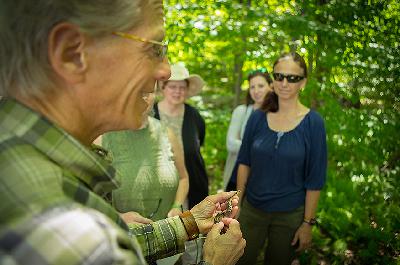

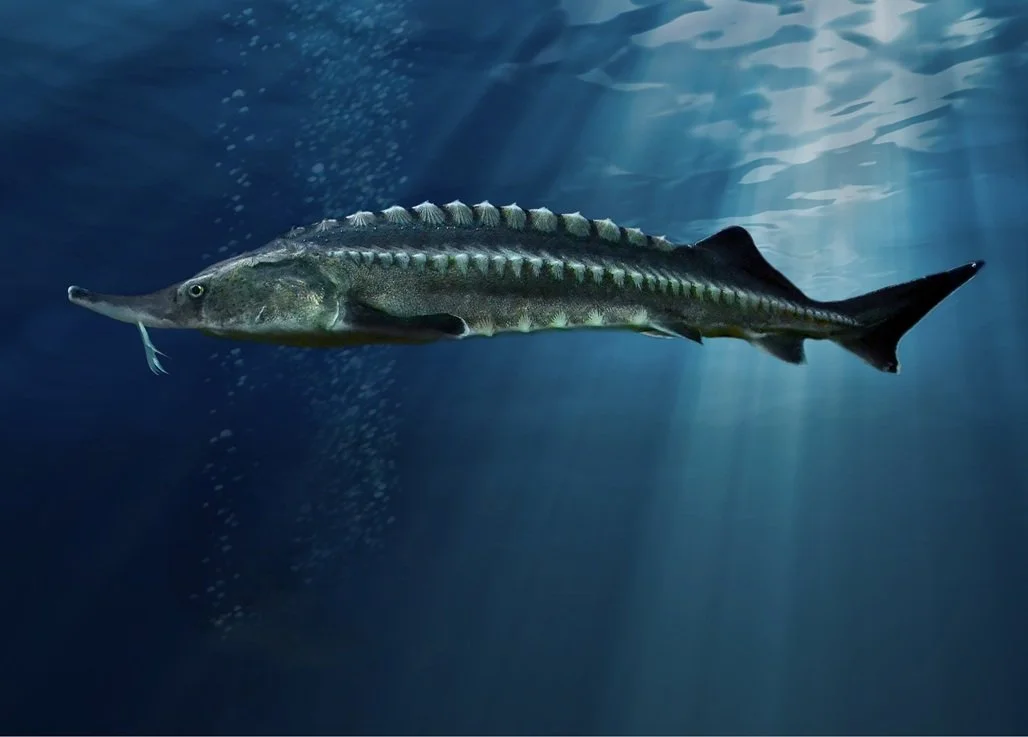
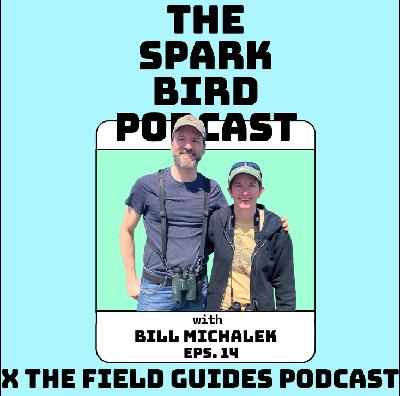



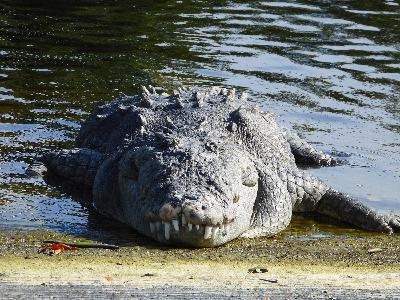

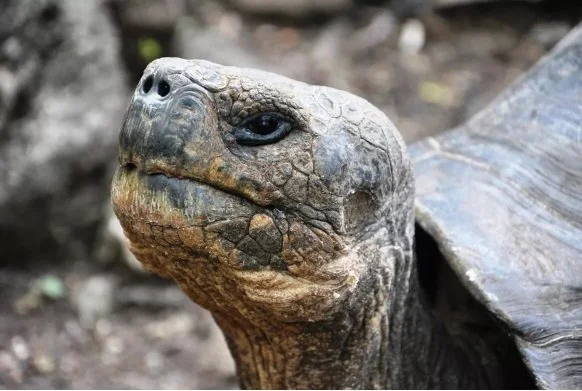

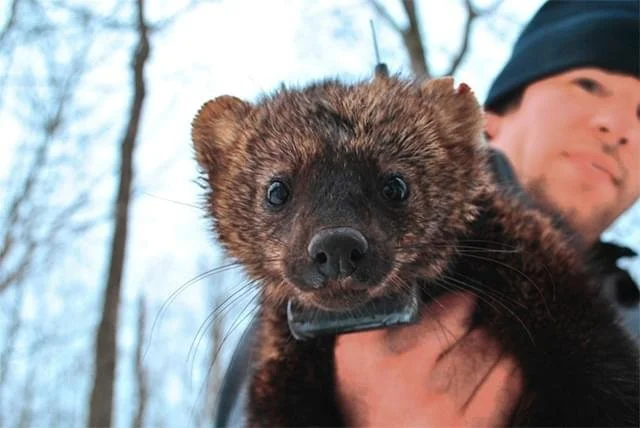

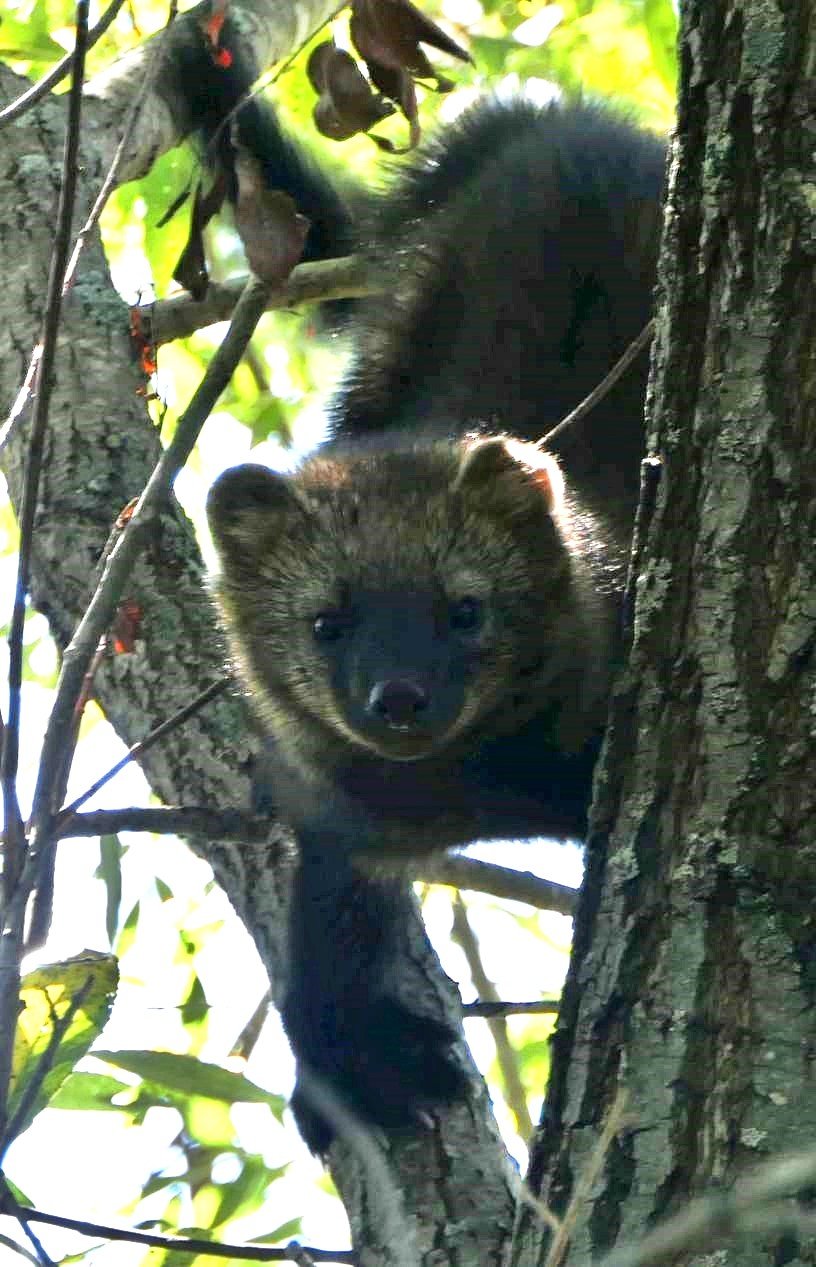

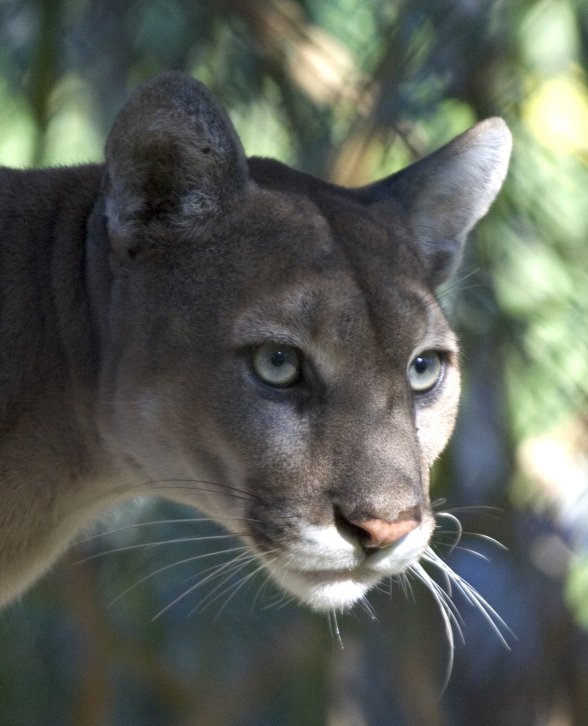
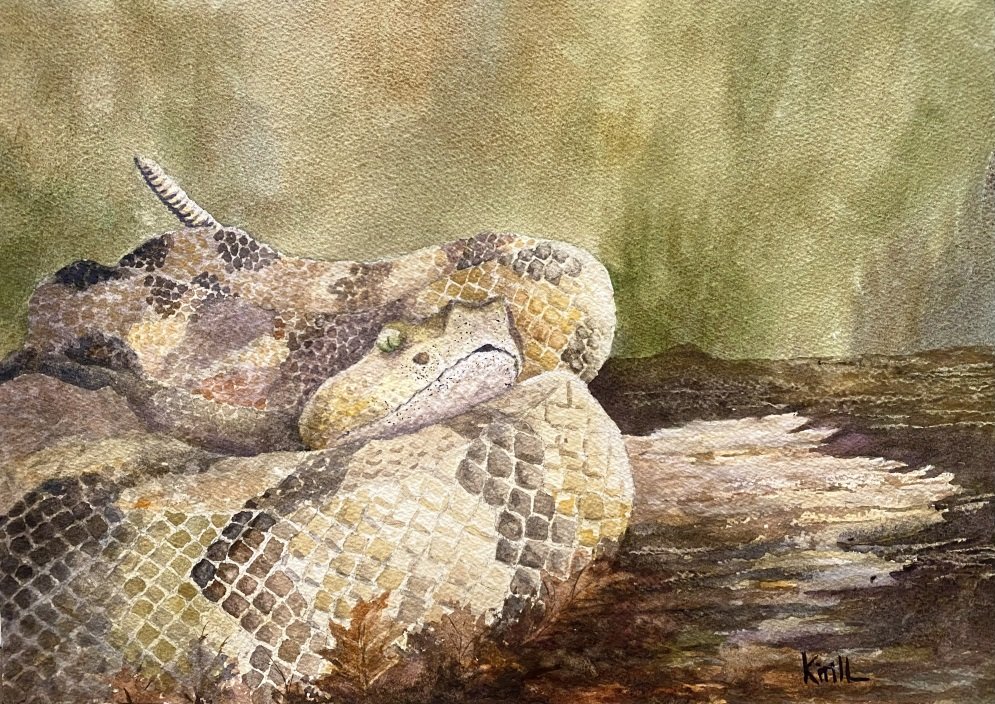



This is a wonderful podcast. The hosts pick a topic, research it, then work it into a field walk. I have only two suggestions.. quit your day jobs so you can spend more time creating more podcasts; and move to Texas (all of the cool podcasts are in the Northeast. I'm feeling lonely down here. )
You guys are awesome! I really appreciate "show me the data" mindset you two carry with every subject. the jokes, the info, all of it. really great work bill and Steve!
This is one of my favorite podcasts! I love the education mixed with informal chatting and small jokes. I love that you are in the field and describing things just so listener can get a sense of really being there! Thank you!